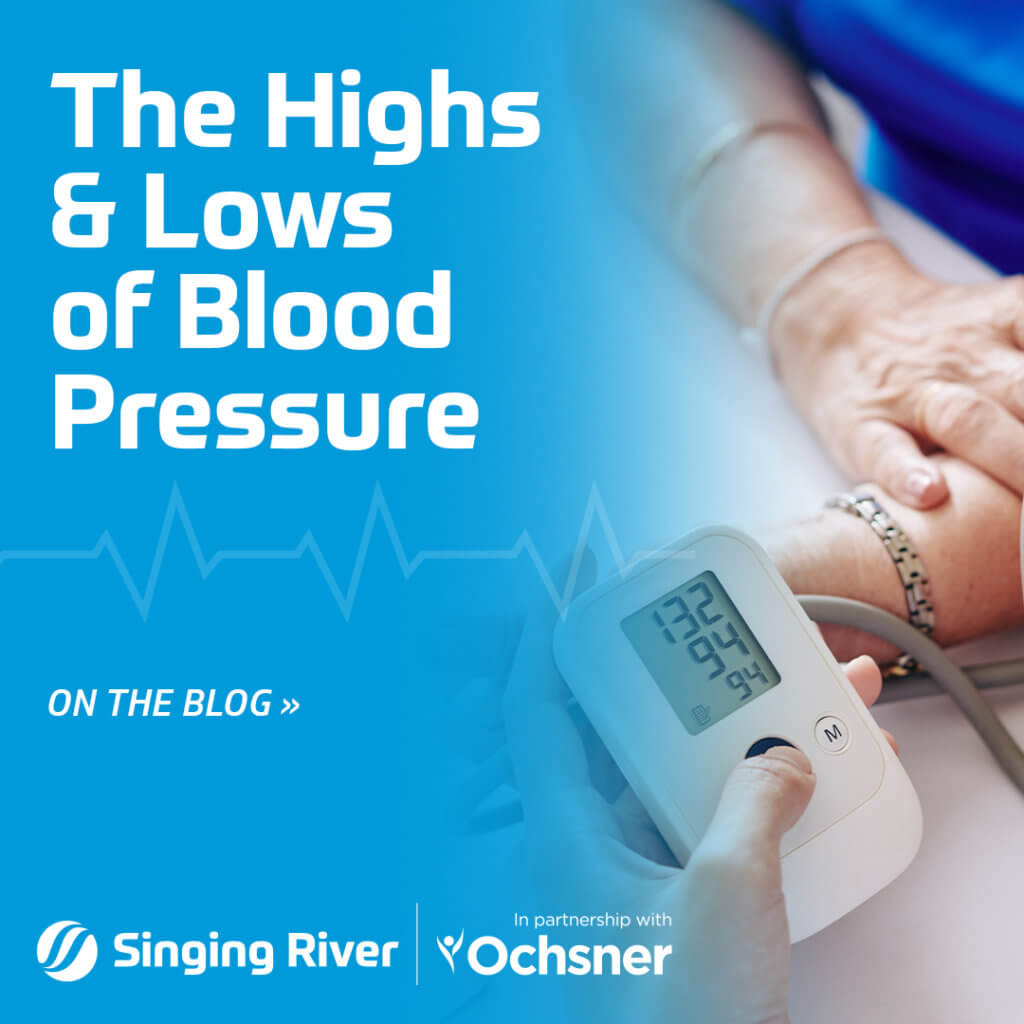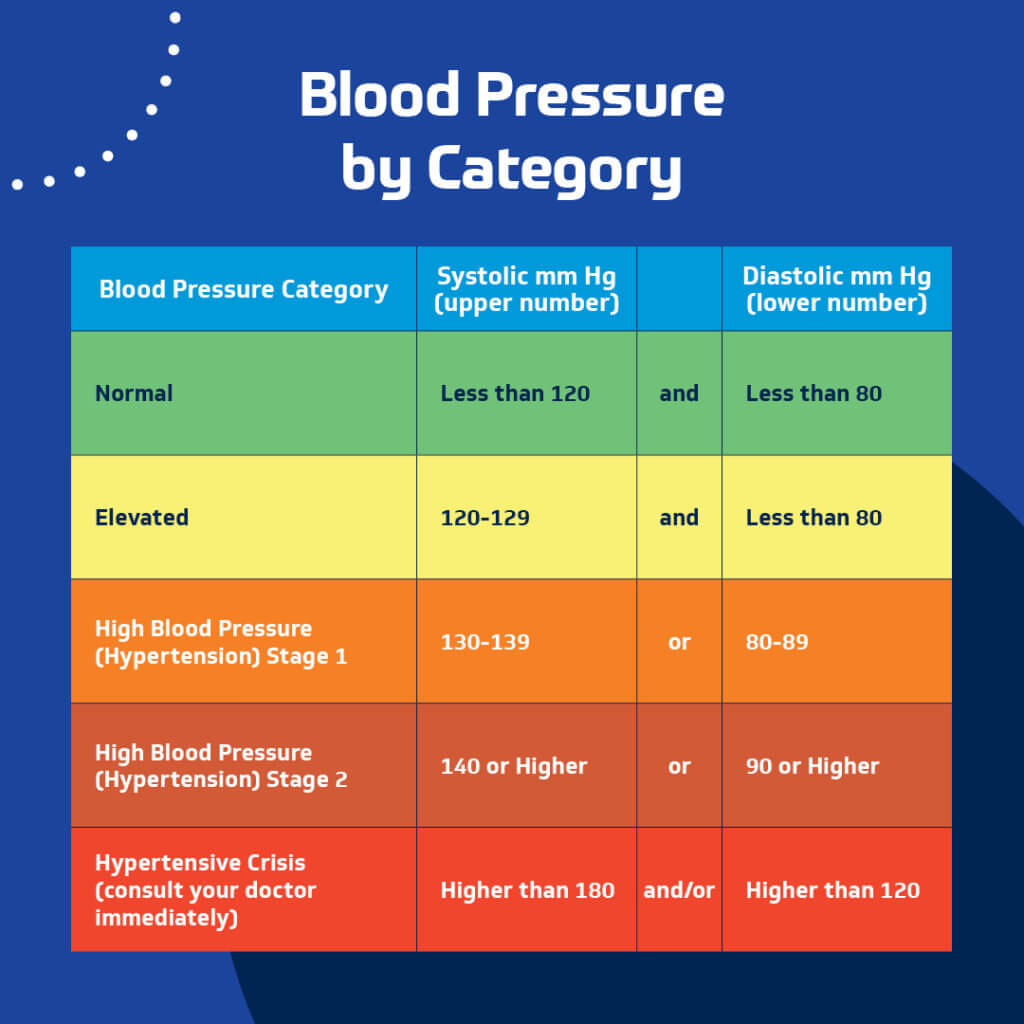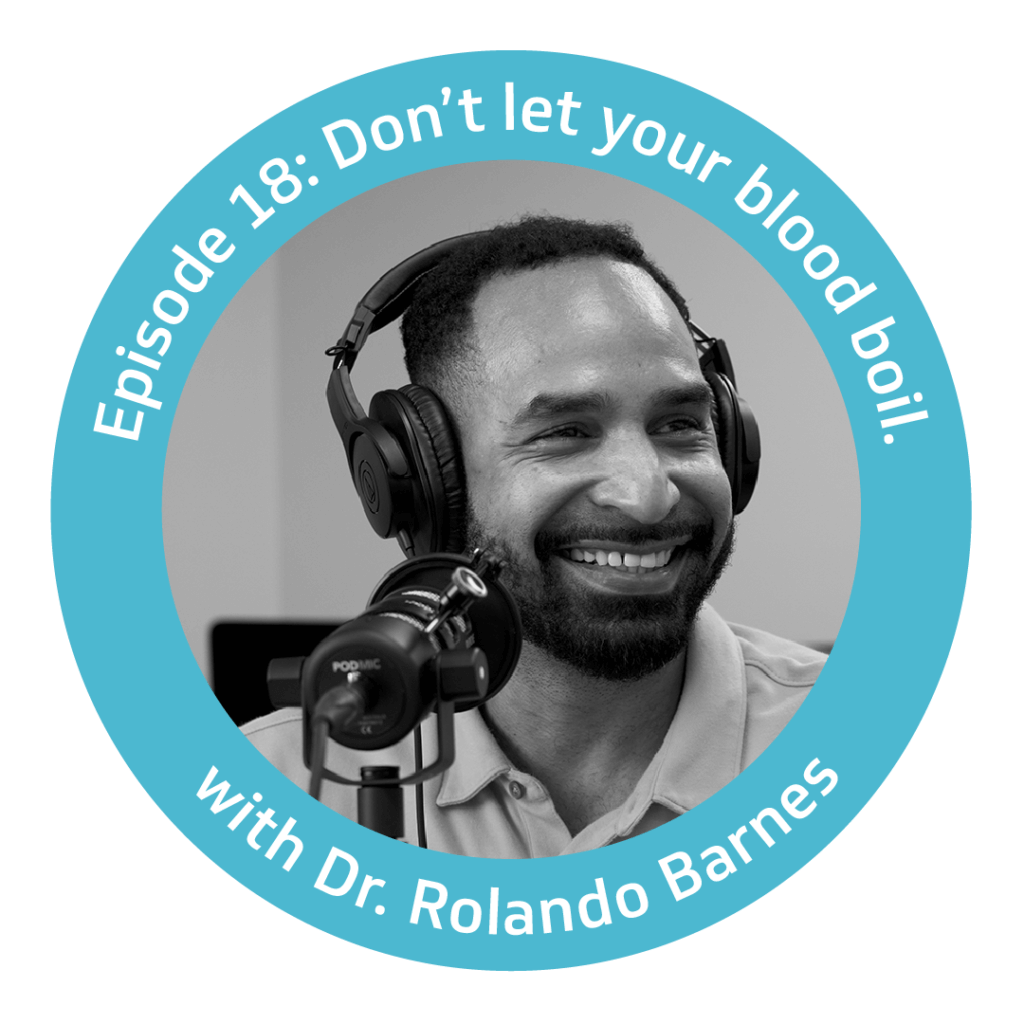The Highs & Lows of Blood Pressure

We’re all used to that slightly uncomfortable squeeze of a blood pressure sleeve, which is a routine part of any visit to a Medical Clinic. But what exactly is the reading telling us? How do we read it? And why is it so important?
Abnormal blood pressure (whether high or low) can be a huge indicator of health issues and a serious risk factor when combined with other symptoms or ailments. So, understanding how to interpret your blood pressure reading and a general understanding of “normal” versus high and low ranges can be very helpful in truly comprehending your overall health.
What do the two numbers in my blood pressure reading mean?
You’ve probabyl noticed that when your blood pressure is reported out it has two numbers, and looks something like ###/##. What you’re seeing is the pressure with which your blood pushes against the walls of your blood vessels DURING a heartbeat (top number, technically called “systolic”) and BETWEEN heartbeats (bottom number, technically called “diastolic”).
Fun Fact: The blood pressure cuff and its accompanying pressure gauge is called a sphygmomanometer.
What’s a “Good” blood pressure reading?
This chart, based on classifications from the American Heart Association, is very helpful in breaking down and interpreting blood pressure results.

From elevated to hypertensive crisis
If someone’s blood pressure readings are consistently reading in the “Elevated” range, that person is likely to develop further stages of hypertension unless corrective action is taken. That’s why knowing, monitoring, and taking steps to keep blood pressure normal are key. Knowledge is power and knowing your blood pressure can prevent you from ending up with hypertension, which can cause stroke, heart attack, or even death.
What if my blood pressure is low?
Low blood pressure is generally defined as someone with a top number (systolic) reading of 90 or less, or a lower number (diastolic) of 60 or less.
Sometimes, low blood pressure has no symptoms at all or it may be caused by dehydration and could cause dizziness or faiting, but more importantly, may be a sign of a more serious underlying medical condition, so it is not to be ignored.
Other symptoms of low blood pressure can include blurred vision, fatigue, confusion, or cold & clammy skin. These symptoms warrant a trip to your Primary Care Provider or closest Medical Clinic, especially if they are ongoing.
What can I do to maintain a healthy blood pressure?
Simple lifestyle changes can help you maintain a healthy blood pressure. Some ideas include:
- Diet changes: Reducing salt, increasing your intake of whole grains and potassium-rich fruits and vegetables, and limiting caffeine intake
- Quitting smoking: Need help? FREE resources for smoking cessation can be found at the Mississippi QuitLine.
- Reducing stress
- Exercising regularly
- Getting a good night’s sleep: Trouble sleeping? You may benefit from a Sleep Study.
Low or high, blood pressure is one thing that’s good to understand and know about yourself.
As you can see, blood pressure is a good indicator of your general overall health. Make a point to know your blood pressure and if you don’t, it might be about time for a trip to a Primary Care Provider who can monitor your blood pressure over time.
Content Inspired by Healthcare is Selfcare: The Podcast

The saying “don’t let your blood boil” could actually help improve your quality of life both physically and mentally. In this episode of Healthcare is Selfcare: The Podcast, Family Medicine Physician, Dr. Rolando Barnes educates us on how to live our best life by managing our blood pressure.